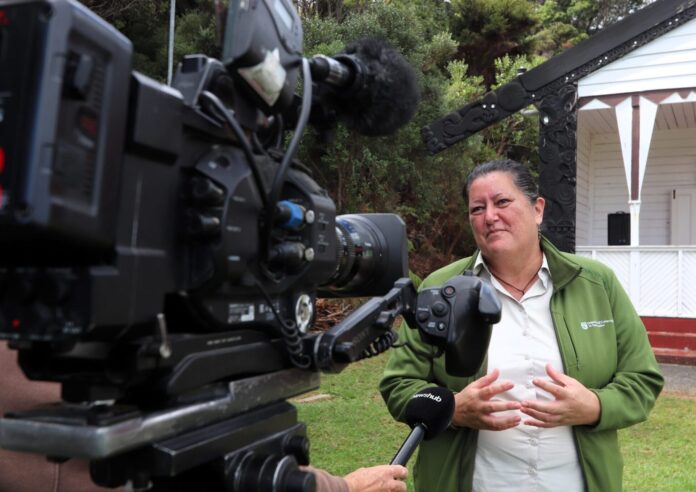A decade-long plan to remove wild deer from Northland was jointly launched today by the Northland Regional Council, Department of Conservation (DOC), and local hapū.
If successful, the plan – which will cover an area of over 13,000 square kilometres and one of New Zealand’s most biodiverse regions – will be the largest deer-free area in mainland New Zealand.
The first project is the $1.5 million eradication of sika deer from the Russell Forest, due to begin today. This pilot will potentially model for the rest of the region.
The sika project is the result of a four-year partnership between NRC, hapū Ngāti Kuta, Patukeha, Te Kapotai, Ngatiwai Iwi and DOC.
Northland Regional Councillor, Marty Robinson, who represents the council’s Bay of Islands-Whangaroa constituency, says this project is grounded in ‘by community for community’.
A working group consisting of hapū, NRC, DOC, and other technical experts in animal eradication programmes was formed to build the project from the ground up and provide the mechanism for joint decision-making including designing of the contracts, tender evaluation and supporting the drafting of the eradication plan.
Russell Forest is a diverse native ngāhere (forest), it is the largest inland forest and scrubland area of the eastern landscape. It is an important example of a warm temperate rainforest in the region. It contains kauri, tawa, kōtukutuku/tree fuchsia, and totara along with threatened bird species, including the North Island brown kiwi.
Unlike most of the country, the forest composition has not been significantly altered by introduced mammalian browsers. Wild deer have historically not been present in Te Taitokerau, but due to illegal releases and farm escapes there are some small wild populations in the area.
Councillor Robinson says sika deer were illegally released into the Russell Forest about 35 years ago and are hundreds of kilometres outside of their regulated feral range in the central North Island.
“Sika deer are more elusive and eat a wider range of plants than other deer species and pose a threat to Northland’s biodiversity. Northland is a biodiversity hotspot for New Zealand and working to keep it deer free will ensure its preservation.”
Sue Reed-Thomas, the Director for DOC’s Northern North Island, emphasised the importance of taking action promptly regarding the current wild deer populations.
She says that while these populations are currently small and scattered, immediate action is important as wild deer have the potential to breed rapidly when food is abundant. There would be considerable future costs for the region if they were to become widely established, she said.
“We have a unique opportunity with the funding provided by the Government for deer management and goat control in Budget 2022 to remove the current populations and prevent further establishment of wild deer into the future.”
“This will help safeguard Te Taitokerau, home to globally rare ecosystems,” she said.
The initiative will be funded by both agencies and Cr Robinson – a member of the council’s Biosecurity and Biodiversity Working Party – says the NRC has already allocated $5.9 million over the nine years to 2031 to manage deer in Northland.
Ms Reed-Thomas said the development of a wild deer free Te Taitokerau programme will involve a thorough and inclusive consultation process. This will give effect to Te Tiriti, develop stronger partnerships with the local deer industry and farmers, community, and other stakeholders, she said.
“This will deliver a programme of work that’s developed by the region for the region.”
Councillor Robinson says it’s envisaged the learnings from such a programme, including hunting methodologies, data capture, research and development, and communications and engagement, will be able to be used to support to objectives of Te Ara ki Mua in other locations.
DOC released Te Ara ki Mua in 2022 and it provides a framework to improve management of wild animals (deer, goats, feral pigs, tahr and chamois) across New Zealand along with a supporting implementation budget of $30 million for goat control and deer management. One of the objectives of the framework is to prevent any further expansion of the range of wild deer.
Councillor Robinson says the next step in the wider eradication strategy is to design the early engagement to test the idea of a Te Taitokerau wild deer management strategy in more detail with hapū, iwi, the agricultural sector and other key stakeholders.
“This will further inform the development of the proposal and provide confidence for council and DOC that they understand the views of key parties and the likely size and scope of the work required.”



